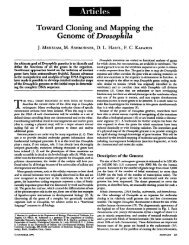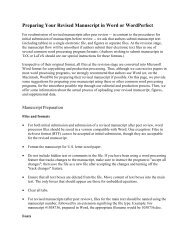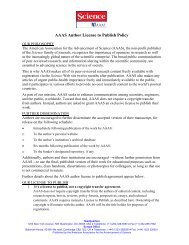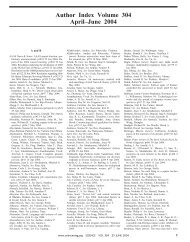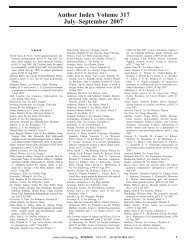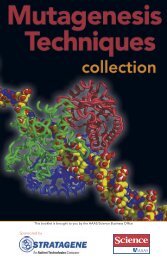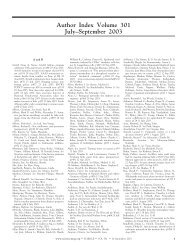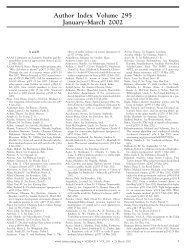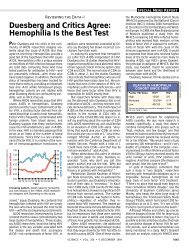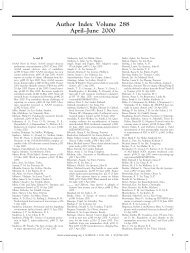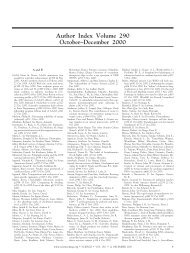Chinese Academy of Sciences (PDF) - low res version
Chinese Academy of Sciences (PDF) - low res version
Chinese Academy of Sciences (PDF) - low res version
Create successful ePaper yourself
Turn your PDF publications into a flip-book with our unique Google optimized e-Paper software.
CREDIT: PHOTOS BY RICKY WONG<br />
High Magnetic Field Laboratory in Hefei.<br />
for Digital Earth, UNESCO’s International Centre on Space Technologies<br />
for Natural and Cultural Heritage, and the Integrated Research on Disaster<br />
Risk program.<br />
<strong>Chinese</strong> Ecosystem Research Network<br />
The <strong>Chinese</strong> Ecosystem Research Network (CERN), founded in 1988, is a<br />
ter<strong>res</strong>trial <strong>version</strong> <strong>of</strong> CEODE, collecting and processing data from ecological<br />
stations across the country. One <strong>of</strong> the oldest long-term ecological <strong>res</strong>earch<br />
networks in the world and a key member <strong>of</strong> International Long-term<br />
Ecological Research Network, it now comprises 42 field stations covering<br />
every type <strong>of</strong> ecosystem in China, five disciplinary sub-centers, and one<br />
synthesis center, says Yu Guirui, who directs the synthesis center. Its mission<br />
is three-fold: Long-term monitoring <strong>of</strong> 280 ecological indicators in the<br />
atmosphere, soil, water, flora, and fauna at field station sites; <strong>res</strong>earch on<br />
the structu<strong>res</strong>, functions, and dynamics <strong>of</strong> China’s major ecosystems; and<br />
outreach, or demonstration, to disseminate best practices in ecosystem<br />
management to farmers and others.<br />
The 42 field stations belong to different institutes within CAS, Yu explains,<br />
so one important task <strong>of</strong> the synthesis center has been to standardize data<br />
collection processes and integrate information from various sources. The<br />
data can then be shared with other <strong>res</strong>earchers and the public and used<br />
by CERN scientists to develop scientific publications, reports, and policy<br />
recommendations. The major <strong>res</strong>earch areas for the network have changed<br />
with available technologies and the needs <strong>of</strong> the country; hot topics at<br />
p<strong>res</strong>ent include the structu<strong>res</strong>, functions, and services <strong>of</strong> ecosystems;<br />
ecosystem cycle and carbon budget assessment; ecosystem <strong>res</strong>ponses<br />
to climate change and adaptation; and biodiversity featu<strong>res</strong> and maintenance.<br />
One 10-year-old project within CERN, ChinaFLUX, focuses on the<br />
movement over time <strong>of</strong> carbon dioxide, water vapor, and energy between<br />
ter<strong>res</strong>trial ecosystems and the atmosphere. Both ChinaFLUX and CERN as<br />
a whole have close ties with other national and international networks that<br />
carry out ecological monitoring.<br />
Third Pole Environment<br />
The Plateau and its surrounding mountains sit astride a dozen countries<br />
and together hold more than 100,000 km 2 <strong>of</strong> glaciers. More than one billion<br />
people rely on water from its ice and snowmelt, which fuels rivers such as<br />
the Indus and the Yangtze. The area appears to be <strong>res</strong>ponding particularly<br />
acutely to global climate change, and it in turn exerts a far-reaching effect<br />
on climate through its effects on the Asian Monsoon and the Westerlies that<br />
b<strong>low</strong> in from Europe. Yet compared with those other large expanses <strong>of</strong> ice<br />
and snow, the North and South Poles, little <strong>res</strong>earch has been done on the<br />
Tibetan Plateau region, which is why in 2009 <strong>res</strong>earchers from 15 countries<br />
Yu Guirui<br />
Institute <strong>of</strong> Tibetan Plateau Research<br />
gathered to launch a new program, the<br />
Third Pole Environment (TPE).<br />
The program was initiated by the CAS Institute<br />
<strong>of</strong> Tibetan Plateau Research, which<br />
saw that in order to truly understand conditions<br />
on the third pole, a trans-national<br />
network <strong>of</strong> field stations would be needed.<br />
Today, says institute Director Yao Tandong,<br />
“We have more than 20 stations, but that’s<br />
still not enough.” Researchers use the stations<br />
to collect data on processes ranging<br />
from geological uplift to changes in the<br />
mass balance <strong>of</strong> glaciers to wind speed,<br />
and use it to answer an array <strong>of</strong> questions<br />
about the TPE. “Among all these studies,<br />
we think water problems are the key,” says<br />
Yao, since “water processes will also influence<br />
ecosystems, soil systems, and human<br />
activities.”<br />
Museums and Botanical Gardens<br />
CAS’s many museums and botanical gardens<br />
are multipurpose facilities that house<br />
collections, enable taxonomy and other<br />
basic <strong>res</strong>earch, and serve as a platform for<br />
science education. The 13 CAS botanical<br />
gardens, scattered all over mainland China,<br />
contain thousands <strong>of</strong> plant species, while<br />
its 18 museums showcase everything from<br />
dinosaurs to marine biota to insects. The<br />
latter includes Asia’s largest herbarium, the<br />
Institute <strong>of</strong> Botany’s National Herbarium,<br />
which dates back to 1929 and boasts more<br />
than 2.6 million specimens.<br />
“Among all<br />
these studies,<br />
we think water<br />
problems are<br />
the key. Water<br />
processes will<br />
also influence<br />
ecosystems,<br />
soil systems,<br />
and human<br />
activities.”<br />
Editorial News Report<br />
29



